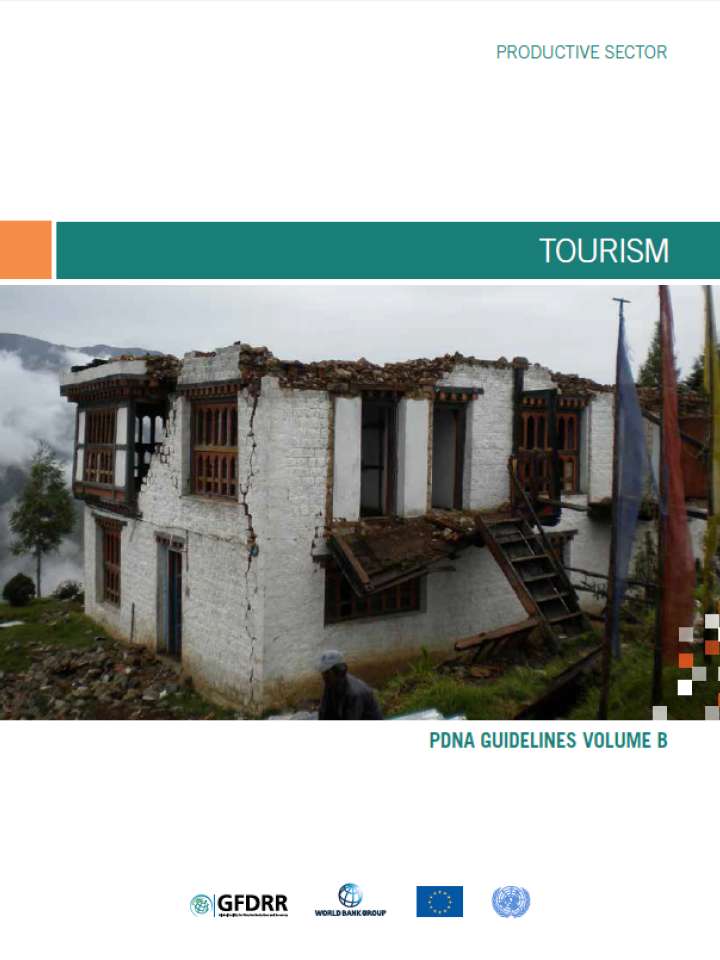Post-disaster needs assessments guidelines: Volume B - Tourism
The tourism sector is highly vulnerable to the effects and impacts of disasters of every kind. This is due to three main reasons: first, the frequent or usual location of tourism assets in vulnerable coastal areas; second, the volatility of tourism demand due to fear or misinformation about the possible consequences of disasters; and third, in view of the seasonality
of the high-demand tourism season, a disaster may mean an entire season’s worth of lost income.
This chapter describes the procedure to assess the effects of a disaster on the tourism sector, using the time-proven methodology originally developed by the United Nations Economic Commission for Latin America and the Caribbean (UNECLAC) (Handbook for estimating the socio-economic and environmental impact of disasters, 4 volumes, United Nations, 2003), further developed by the World Bank´s Global Facility for Disaster Recovery and Reduction (GFDRR) (Guidance Notes for Damage, Loss and Needs Assessment, 3 volumes, The World Bank, Washington, D.C., 2010), and now expanded and adopted by the PDNA. Application of the methodology enables the assessment of disasters’ economic and social impact on the tourism sector, and the estimation of post-disaster needs for recovery and reconstruction.
This volume of the Post Disaster Needs Assessment Guidelines is available in English, French, and Russian.
